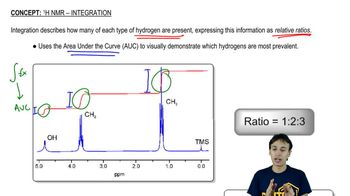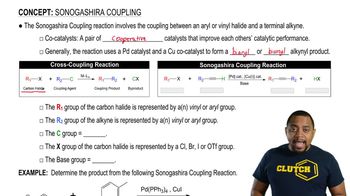Here are the essential concepts you must grasp in order to answer the question correctly.
Multiplicity in NMR Spectroscopy
Multiplicity refers to the splitting of NMR signals into multiple peaks due to interactions between neighboring non-equivalent hydrogen atoms. This splitting pattern helps determine the number of adjacent hydrogens, providing insights into the molecular structure. A quintet indicates the presence of four neighboring hydrogens.
Recommended video:
Pascal's Triangle in NMR
Pascal's Triangle is used to predict the ratio of peak intensities in NMR signal multiplicities. Each row corresponds to a different multiplicity, with the coefficients representing the relative intensities of the peaks. For a quintet, the peak ratio follows the sequence 1:4:6:4:1, reflecting the distribution of signal intensities.
Recommended video:
Coupling Constant
The coupling constant (J) measures the interaction strength between neighboring nuclei, influencing the distance between peaks in a multiplet. It is expressed in Hertz (Hz) and remains consistent across the peaks of a multiplet, providing information about the spatial relationship between atoms in a molecule.
Recommended video:
Sonogashira Coupling Reaction
 Verified step by step guidance
Verified step by step guidance Verified video answer for a similar problem:
Verified video answer for a similar problem:



 8:06m
8:06m